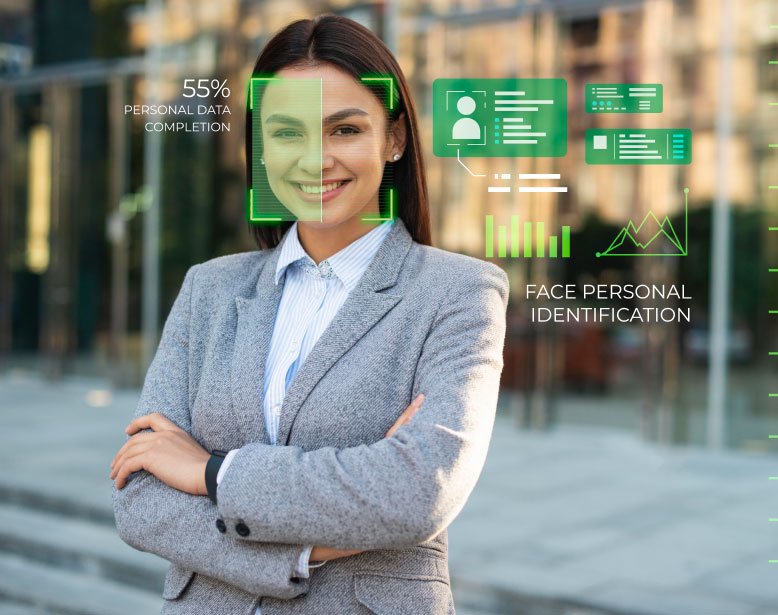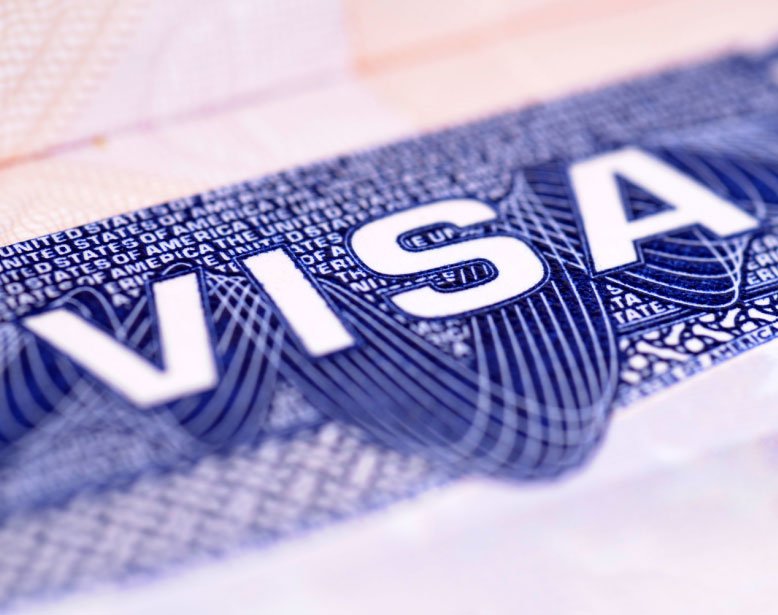October 8, 2025

Software Development Outsourcing
Candidate Identity Verification
Candidate identity verification: Especially remote or cross-border recruiting, candidate identity verification is no longer optional. You must know that the person you interviewed is truly the person you hire. Fraud, impersonation, forged credentials, and AI-assisted deception are rising.
In this post I explain candidate identity verification, show you data that reveals how big the problem has become, walk through best practices, and give you an actionable roadmap you can implement in your hiring process.
What Is Candidate Identity Verification?
Candidate identity verification is the set of processes, tools, and checks you use to confirm that a candidate is who they claim to be. It involves verifying identity documents, biometric matching, live checks, credential validation, behavior consistency, and ongoing checks as needed.
It differs from simple background checks. Background checks validate past history, but candidate identity verification binds a real, living person to those documents and that history. Without identity verification, a candidate could pass background checks with forged or stolen details.
The goals are:
- Prevent impersonation or proxy interviews.
- Detect fake or manipulated documents.
- Ensure that credential claims are tied to a real person.
- Maintain security, compliance, and trust.
The Growing Risk: Why Candidate Identity Verification Is Urgen
Identity fraud and candidate misrepresentation
Hiring teams are discovering that candidate misrepresentation is more widespread than they assumed. According to the HireRight 2025 Global Benchmark Report, one in six organizations worldwide has experienced identity fraud during hiring.
Employers across Asia-Pacific reported a 20% rate of identity fraud. Europe and EMEA hovered around 19%, and North America about 15%. HCAMag
Moreover, almost two in five employers found at least one discrepancy in candidate background screening. HCAMag
Discrepancies are common
A recent analysis of global hiring risks showed that over three quarters of businesses found at least one discrepancy in a candidate’s background over the past year. Help Net Security
These discrepancies frequently occur in employment history; false job titles, exaggerated durations, or incorrect responsibilities. HCAMag+1
Fraud techniques are evolving
Once basic resume lies were common. Now fraudsters use more advanced tactics: AI-generated identities, deepfake images, fake video interviews, forged documents with tampered biometric data. Hypr Blog+2VidCruiter+2
Projections show that by 2028, one in four candidate profiles globally may be fraudulent. First Advantage North America+1
HR leaders acknowledge the gap. A Checkr survey found only 19% of managers are “extremely confident” that their current hiring process can catch fraudulent applicants. Checkr
Over 63% of organizations have updated their hiring protocols in the past year specifically to counter identity and AI fraud threats. Checkr
These data make it clear: candidate identity verification is no longer a nice extra, it is essential.
Why Traditional Background Checks Are Not Enough
Many hiring systems rely heavily on background checks (employment history, education, criminal records). But these checks often lack a visual or biometric component. As a result:
- Data sources may be outdated or incomplete, allowing for manipulated candidate profiles to slip through. Proof+1
- Background checks cannot prove that the person presenting the resume is the same person behind the document.
- Without identity verification, everything you check (documents, references, past employers) loses binding certainty.
One article rightly states: “Without a verified identity, right-to-work checks, criminal record searches, and employment history verifications are pointless.” cFIRST Background Checks
Hence, candidate identity verification must be integrated into your hiring pipeline, not treated as optional.
Core Components of Strong Candidate Identity Verification
To build a strong identity verification strategy, include these layers:
1. Document Verification
- Accept government-issued identity documents (passport, national ID, driver’s license).
- Use software or services that detect forgeries, tampering, photo edits, and document inconsistencies.
- OCR scanning and validation against known document templates (MRZ, QR codes, security features).
- Cross-check document metadata with issuing databases when possible.
Document validation is the foundation of verification. Many platforms operate in this space. Regula+2cFIRST Background Checks+2
2. Biometric / Face Matching & Liveness
- Require the candidate to provide a live selfie or video during the verification session.
- Use face matching algorithms to compare selfie or video frame to the ID document photo.
- Enforce liveness detection (blink, turn head, ask for gesture) to ensure it’s a live person, not a static image or video.
- Monitor consistency over time in the interview stages.
This ensures someone is physically present and matches the documents. Tools supporting this are described in identity proofing best practices. Hypr Blog+2Veriff+2
3. Video Interview Identity Checks
- During video interviews, ask for the candidate to show their ID on camera for a moment.
- Use dual-camera setups (mobile + laptop) to detect off-camera coaching or impersonation Talview Blog.
- Monitor for signs of manipulation or mismatch (lighting changes, multiple faces, voice mismatches) Talview Blog+1.
Some video platforms now include built-in ID verification to match face to ID and detect suspicious behavior. VidCruiter
4. Behavioral and Metadata Checks
- Track IP address, device IDs, location transitions across multiple interview sessions.
- Monitor for unusual patterns (e.g. a candidate interviewing from two countries in close sessions).
- Use anomaly detection to flag profiles with inconsistent metadata.
- For asynchronous tasks, check submission timestamps, editing histories, and content originality.
These behavioral checks add another dimension to identity verification.
5. Reference & Credential Validation
- Contact employers and institutions directly (not just via email).
- Ask detailed, contextual questions to reveal genuine experience.
- Use third-party academic verification services.
- Validate certifications via issuing bodies.
These steps tie the candidate’s claims to external, verifiable sources.
6. Secure Communication & Documentation
- Exchange identity documents via encrypted systems or secure portals.
- Use signed offers, e-signatures, and track versioning.
- Maintain audit logs of who accessed which verification data and when.
Secure infrastructure ensures the identity verification artifacts remain trustworthy.
7. Ongoing / Post Hire Monitoring
- For higher-risk roles, consider periodic re-verification of identity.
- Monitor device usage, login patterns, and access anomalies.
- Compare performance vs. interview assessment consistency.
Identity verification should not end at hire — it may need to persist in roles with elevated risk.
Step-by-Step Roadmap to Implement Candidate Identity Verification
Below is a practical roadmap to help your organization adopt candidate identity verification.
1: Strategy & Policy
- Define which roles require full identity verification and which need lighter checks.
- Choose acceptable identity document types and biometric verification standards.
- Determine risk thresholds for verification failure, escalation, or rejection.
- Develop privacy and data handling policies to comply with GDPR, CCPA, local laws.
2: Tool Selection & Integration
- Evaluate identity verification providers (document + biometric + fraud detection).
- Check their global coverage, API support, error rates, and demographic fairness.
- Integrate the chosen solution into your ATS or recruitment flow.
- Ensure secure data storage, encryption, and limited access.
3: Hiring Pipeline Redesign
Embed identity verification into your process as follows:
- Application — prompt ID upload or initiation of verification early.
- Preliminary screening — validate documents + face match.
- Video interview — live checks and ID presentation.
- Assessment / Test stage — monitor behavior, submission metadata.
- Reference & credential checks.
- Offer stage — final identity confirmation prior to contract.
- Onboarding — match identity again, issue accounts, access.
4: Training & Awareness
- Train HR, recruiters, and interviewers to detect red flags.
- Share patterns of fraud attempts and behavioral anomalies.
- Promote a culture where verification is expected and normalized.
5: Pilot, Monitor & Iterate
- Pilot on select hires first (senior or sensitive roles).
- Monitor false positives, verification drop-off, candidate experience.
- Adjust thresholds, fallback methods, escalation rules.
6: Scale & Continuous Improvement
- Roll out identity verification to all hiring flows.
- Audit periodically for fraud escapes or process gaps.
- Update vendor tools and fraud models as new threats emerge.
Challenges & Mitigations in Candidate Identity Verification
Candidate friction & dropout
Requiring heavy verification up front may deter top candidates. Mitigate by:
- Providing clear instructions and transparency about why identity checks are required.
- Using streamlined, user-friendly tools.
- Allowing fallback/document-based verification when live verification fails.
Privacy, regulation & data handling
Handling identity and biometric data is sensitive. You must:
- Obtain explicit candidate consent.
- Use minimal data retention policies.
- Comply with GDPR, CCPA, and local digital identity laws.
- Encrypt data at rest and in transit.
Bias and fairness
Some verification systems perform worse for certain demographic groups (e.g. darker skin tones). A recent large study tested remote identity verification across demographics and found that some solutions yield higher false rejection rates for certain groups. arXiv
Mitigate by:
- Choosing verification solutions evaluated for fairness and equity.
- Running your own internal audits for false rejections by demographic.
- Always including human review on flagged cases.
Cost & operational complexity
Identity verification tools and integration have costs. But consider them investments compared to the cost of fraudulent hires.
You can start small, limit verification to critical roles, then expand.
Fraud evolves
As you strengthen verification, fraudsters adapt. Keep monitoring new techniques (deepfake, synthetic identity networks) and update your detection models accordingly.
Case Examples & Illustrations
Case A: Remote developer hire
A U.S. company hired a remote developer abroad. They required document upload, face matching, and two live video interviews with ID presentation. No mismatch occurred, and the hire passed performance tests. Identity verification caught a falsified ID attempt in one applicant, who was rejected.
Case B: Sales role with moderate access
A mid-level sales hire went through document check, webcam selfie, reference checking, and IP/device consistency analysis. Everything matched, and ongoing behavior monitoring showed consistency with expectation.
Case C: High risk role (finance)
For a finance controller / CFO role, the company added in-person notarization, video cross-checks, biometric logs, and re-verification annually. Candidate identity verification was strict, but justified by risk.
Metrics & KPIs for Candidate Identity Verification Success
Track these to evaluate effectiveness:
- Verification pass rate vs verification failure.
- False positives (legitimate candidates flagged) and false negatives (fraud not flagged).
- Time added to hiring process.
- Candidate drop-off at verification steps.
- Cost per verification.
- Number of identity-related incidents caught post-hire.
- Candidate satisfaction with verification process.
These help you calibrate your balance between security and candidate experience.
Future Trends & Innovations
- Zero-to-One IDV frameworks: Conceptual models combining document, biometrics, risk scoring, and orchestration. arXiv
- Edge document localization: Mobile solutions that detect ID documents in real time on device for quicker capture. (LDRNet) arXiv
- Fairness-focused verification: Research aiming to reduce demographic bias in biometric systems. arXiv
- Blockchain credentials: Using cryptographic proofs of education and experience to make verification more tamper-resistant
- Continuous identity verification: Ongoing identity checks post-hire based on behavior, network shifts, device changes
These innovations will reshape candidate identity verification capabilities.
Conclusion
In hiring, trust is everything. Candidate identity verification ensures that the person you onboard is indeed the one you vetted. As identity fraud, AI deception, and remote work methods accelerate, identity verification must be deeply embedded in your hiring process.
Use layered systems: document checks, biometric liveness, video interview verification, behavior analysis, credential validation, secure infrastructure, and ongoing monitoring. Be mindful of privacy, usability, fairness, and evolving fraud.
At Cafeto Software, we embed candidate identity verification into how we recruit and deliver teams. We ensure authenticity, security, and trust so you never doubt who is on your team.
If you are ready to strengthen your identity verification strategy or need help designing a pipeline, let’s talk.
Book a meeting now:
https://outlook.office.com/book/[email protected]/?ismsaljsauthenabled
Learn about: The Changing Economics of the H-1B Visa here









